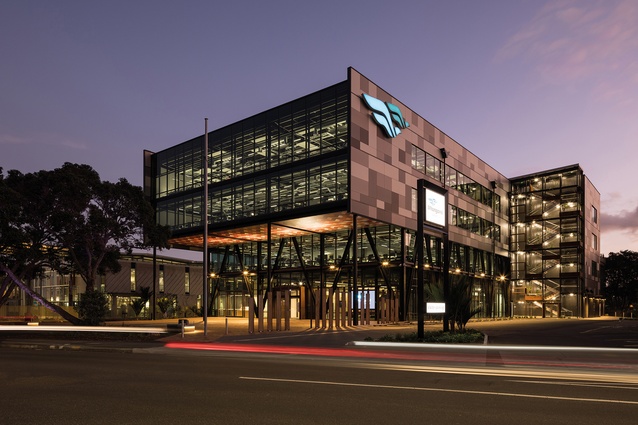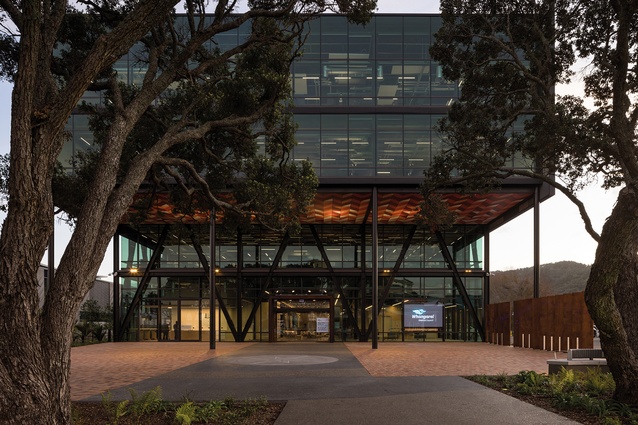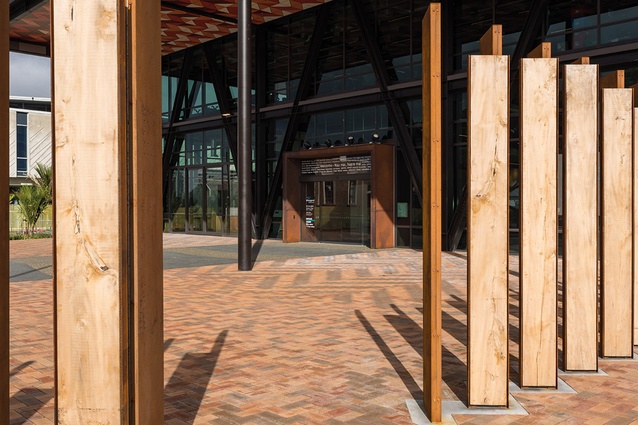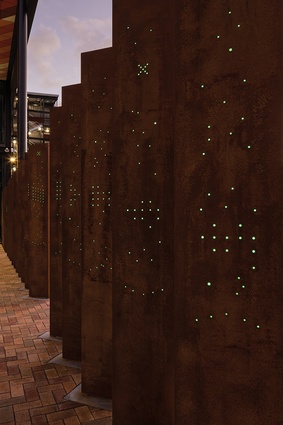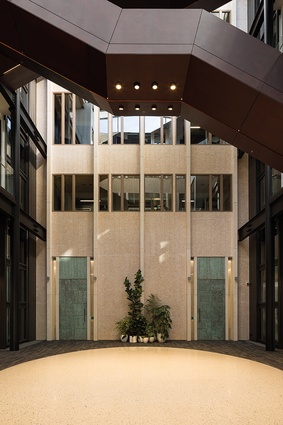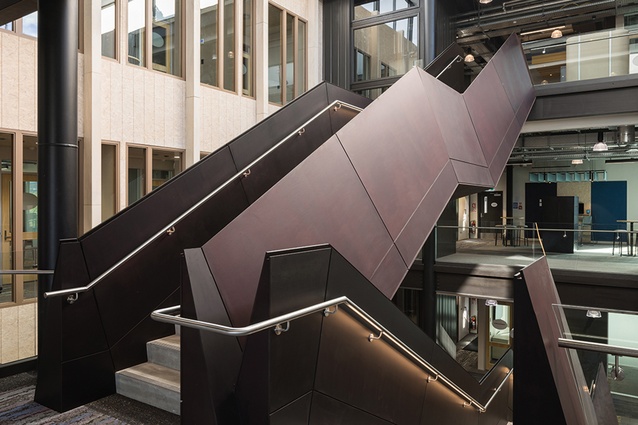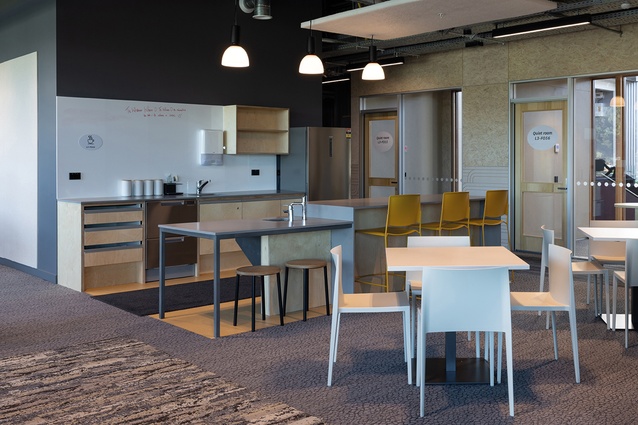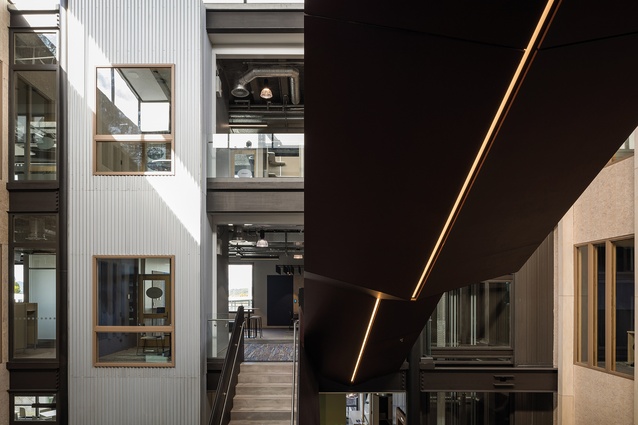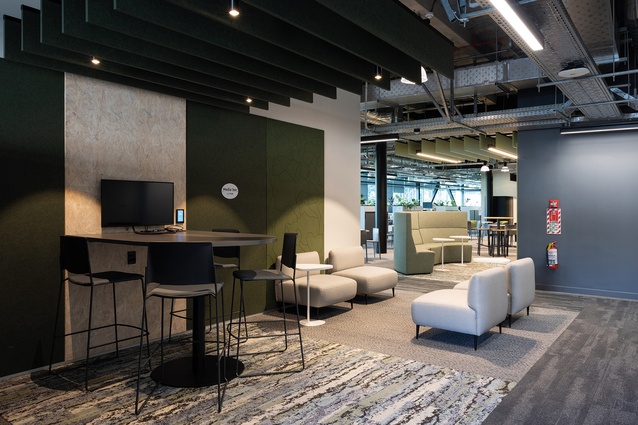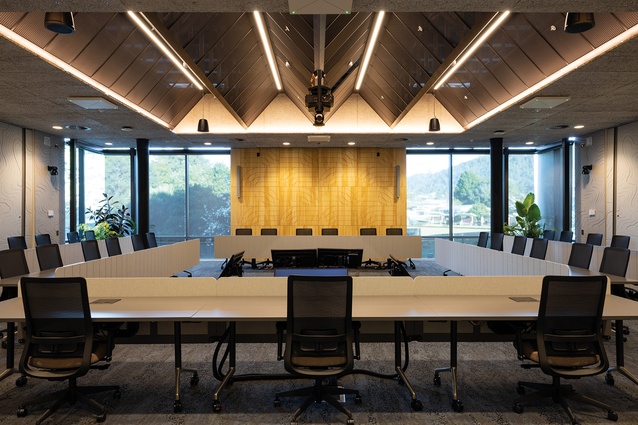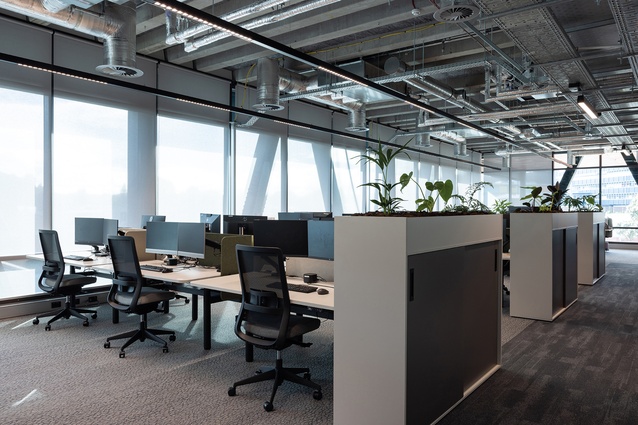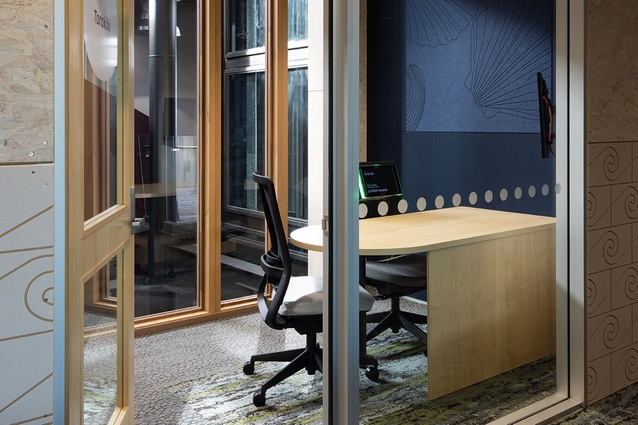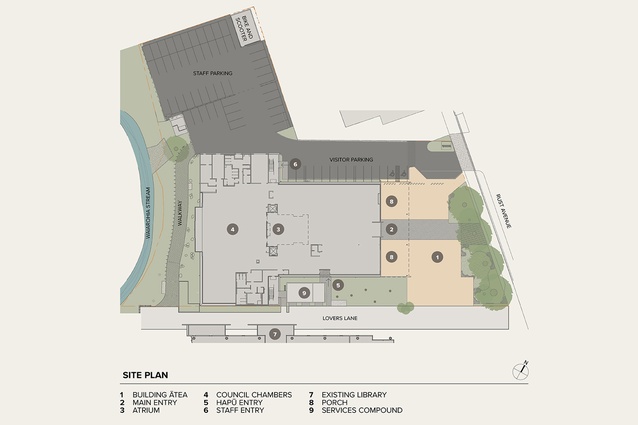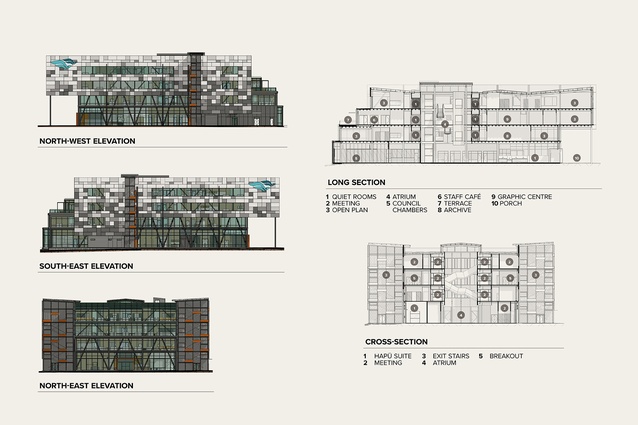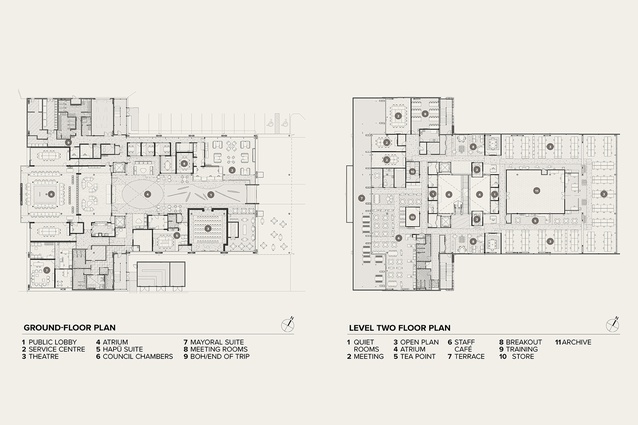Civic welcome
Felicity Brenchley explores the collaborative design process behind Whangārei’s new civic centre, Te Iwitahi, by Team Architects Auckland, and the development of its Māori ‘cultural narrative’ through the engagement of Matakohe Architecture + Urbanism.
Te Iwitahi is a new civic centre for Whangārei that brings together council offices, customer services and council chambers under one roof.
The name, gifted by Ngā Hapū o Whangārei, acknowledges one of their principal tupuna, Te Iwitahi, and translates as ‘for everyone’, capturing the intention for this to be a place where everyone in the district feels welcome.
In early 2019, Team Architects Auckland, as part of a design-build consortium, was engaged to develop the functional brief for the building. Through a series of workshops with client stakeholders, a complex set of spatial, operational and environmental requirements was identified. During this phase, a site was selected adjacent to the Whangārei Central Library and Forum North Entertainment Centre, with the intention of establishing a single civic precinct for the city.
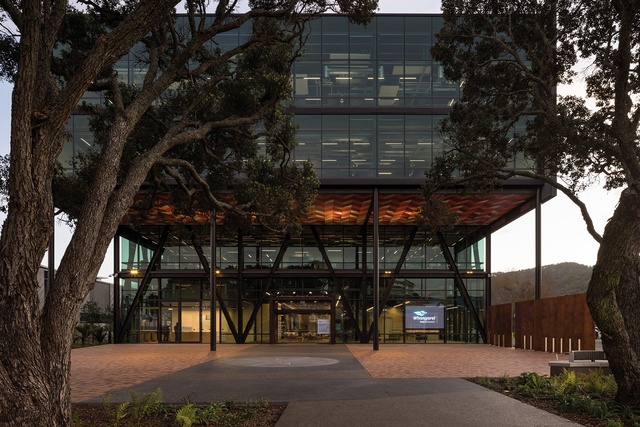
The design-build process was fast-tracked to meet a tight construction deadline so, when Aotearoa entered its first COVID-19 lockdown one day after the preliminary design stage had formally commenced, the architects had no choice but to continue on at full pace, collaborating with a team of 15 consultants via Zoom from their newly established home offices.
As global lockdowns began to impact supply chains, the decision was made to order structural steel, based on bulk and location drawings, before developed design had even begun. In the end, a total of four staged building consents were granted to enable the construction to proceed in parallel with design development. Ironically, the thing that caused the biggest delay to the schedule was the council RFI (request for information) process.
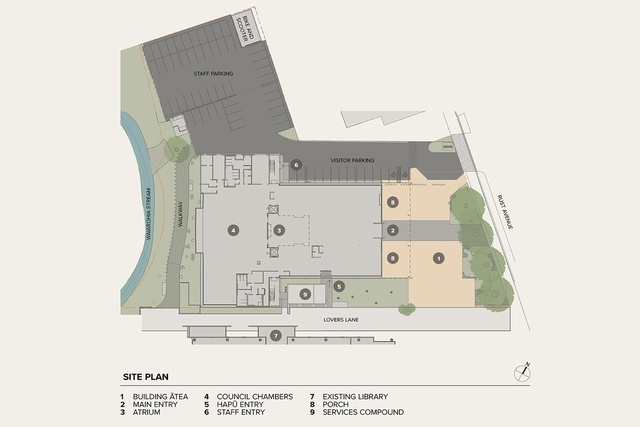
What would be most architects’ worst nightmare was, to Kerry Avery of Team Architects, just another challenge in a long career spent delivering complex projects with tight time frames and limited budgets. Together with a skilled team of consultants and contractors, Avery and his colleagues pulled it off.
A recent recipient of a Te Kāhui Whaihanga NZIA Local Architecture Award, this 8300sqm, four-storey public building has a strong street presence, welcoming visitors via a double-height porch connected to a large ātea space, which links to the adjacent library. The client is pleased with the outcome and is already reaping the benefits of a fit-for-purpose building, housing all council staff in one location. Workspaces and meeting rooms are embedded with the latest technology for effective team collaboration, and staff well-being and accessibility have been prioritised. The building has been designed for operational energy efficiency and with future adaptability in mind, and it is hard not to be impressed with the shear enormity of what has been achieved by the project team.
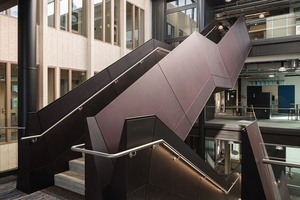
It would be possible to fill several pages with a detailed rundown of the design-build process, the ongoing impact of supply-chain disruptions, rising material costs and a limited budget, and yet my interest in the project lies elsewhere.
When I read on the council website that the building was designed with a Māori ‘cultural narrative’, I immediately wanted to know more: to understand who was engaged in providing this narrative, when and how their input was sought, and what influence this engagement had on the design of the building and surrounding landscape.
These questions are important because it matters who is telling the story and whether it is their story to tell. Timing makes a difference to how deeply a story can embed itself; whether it becomes foundational or a thinly applied veneer.
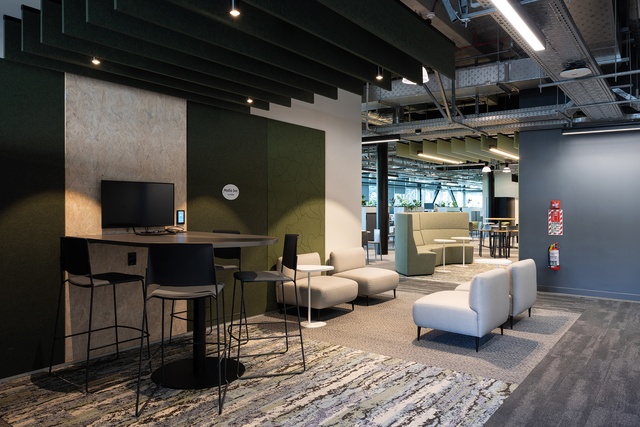
I discovered it was near the end of the preliminary design stage, once the site had been selected and massing, orientation, positioning and general building form decided upon, that Matakohe Architecture + Urbanism joined the design team to provide guidance on tikanga and the appropriate use of cultural concepts within the design.
Around the same time, Landform Consulting prepared a cultural impact assessment, with one of the key recommendations being the need for formal mana whenua engagement in the design process.
Several hapū and iwi identify as mana whenua of the site, as it used to be a place where kai was grown along the awa, and different tāngata would come and go, according to the seasons. Because of this, mana whenua felt that all hapū of the Whangārei region should be involved in the engagement process, starting with a hui at Terenga Paraoa Marae, at which cultural aspirations for the project were agreed. During this hui, a Rōpū Kaumātua was formed to represent hapū, including mana whenua, in all future engagements.
This move simplified the process for the design team while, importantly, ensuring that those with the necessary authority to make decisions on behalf of hapū were involved in all subsequent stages of the project.
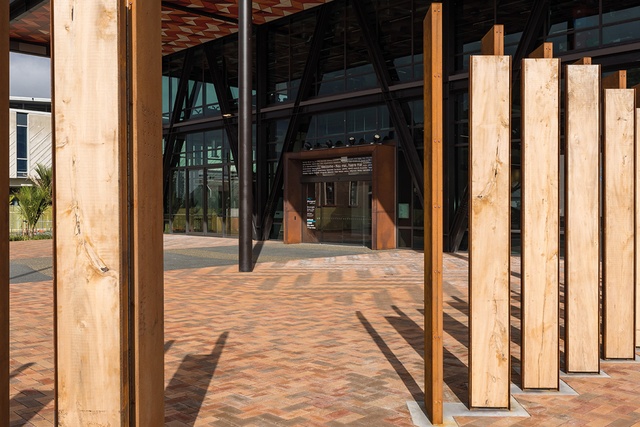
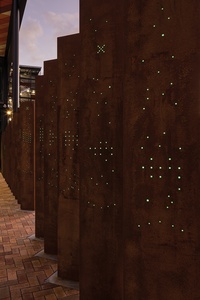
The impact of hapū engagement is most obvious in the ātea space and within the main entrance lobby. An axis of arrival is delineated in the paving design, leading visitors to the front entrance along a route traditionally taken during pōwhiri. A kāpehu inlaid into this path points to surrounding pā that were once connected via pathways converging on the site.
A Corten steel and timber screen between the ātea and car park offered an opportunity to represent the diversity of people who reside in Whangārei. It was originally proposed to inscribe symbols from each culture onto the panels, but this did not sit comfortably with the Rōpū Kaumātua, who were understandably all too familiar with the misappropriation of cultural symbolism. Instead, Hope Pūriri from Matakohe proposed that each culture was represented by the constellations that are most prominent in the sky at its location of origin. This design move is subtle yet feels respectful and appropriate, celebrating diversity while, at the same time, signifying that we are all connected under one sky.
The imagined ātea extends inside the building towards a central atrium. A dark-grey pathway inlaid with local volcanic stones references the murky waters of colonialism and a time when there was much misunderstanding and separation between people. Floating in these waters are abstract timber forms, representing Māori waka and logs harvested by Pākehā colonisers.
The pathway terminates with a circle, representing a place to come together in peace, before people move through to council chambers and offices. Star-like perforations in the ceiling directly overhead are another reminder of the celestial realm that connects us all together.

Hapū imagined that this space of neutrality may be used for civic ceremonies instead of holding them within the politicised space of the chambers.
In a further attempt to decolonise the space, a dedicated hapū meeting room has been provided on the ground floor; it can be entered via the main lobby as well as through a separate external, all-hours access door.
Prior to my visit, I had expected that the atrium would be a space in which it would be possible to read the overarching concept reported on the council website — that the building symbolises the Māori creation narrative, with each floor level representing a different realm of the natural world. Instead, as a result of a constrained budget, this is indicated subtly through changing colour schemes on each of the three office levels, and the use of flora and fauna as names for meeting rooms, which is handy for wayfinding in such a large building but not the most successfully embedded concept.

Despite the obvious successes that came from including hapū in the design process, it is hard not to feel that there was a missed opportunity in the timing of this engagement. If it had started before the site was selected or building form agreed upon, perhaps, a more radical design solution might have presented itself. And this is where I circle back to the design-build process and consider the limitations this procurement method places on design teams.
Te Iwitahi is a great example of collaborative design processes in action within a colonial framework for project delivery. Now is the time to consider ways in which we can begin to decolonise the process of designing our most public buildings. Perhaps we start by welcoming in a slower pace: one that allows for more whakawhanaungatanga so we can share our stories and understand one another better before we put pen to paper. Te ao Māori has so much more to offer than beautifully adorned surfaces, so let’s advocate for processes that allow that potential to be expressed more fully, within our built environment, for the benefit of all.



